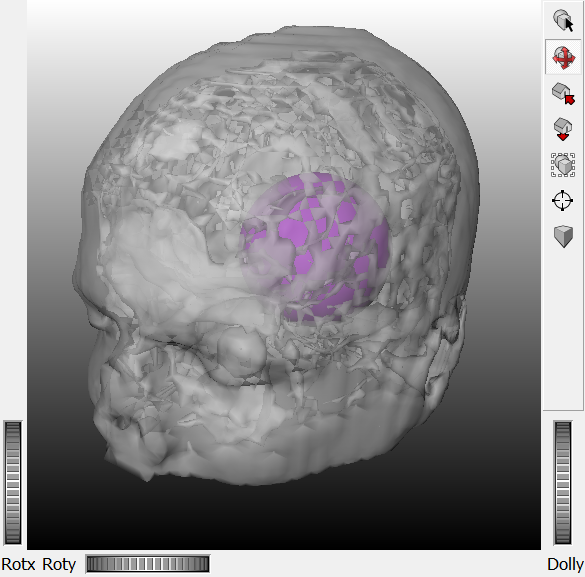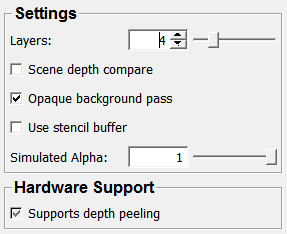SoDepthPeelRenderer¶
- InventorModule¶
genre
author
package
dll
definition
see also
keywords
Purpose¶
The module SoDepthPeelRenderer allows for rendering transparent geometry with correct transparency blending (without the need of sorting triangles).
For a modern implementation of this module, you should use SoPostEffectTransparentGeometry instead.
It is an image-space algorithm, so it has pixel precision and even allows intersecting transparent triangles. It works by rendering the connected scene in multiple passes and peels one RGBA layer per pass (front-to-back) using a double depth test.
The SoDepthPeelRenderer module can be used together with the SoShaderPipeline,
so most shader extensions of the shader pipeline are also supported in depth peeling rendering.
The algorithm was first described by Cass Everitt, his original paper can be found here.

Details¶
This module requires the following OpenGL extensions:
ARB_depth_textureARB_fragment_programEXT_framebuffer_object
These features are typically present on any graphics board that supports at least OpenGL 2.0.
Windows¶
Default Panel¶

Input Fields¶
child¶
- name: child, type: SoNode¶
Output Fields¶
self¶
- name: self, type: SoNode¶
Parameter Fields¶
Field Index¶
|
|
|
|
|
|
|
|
|
|
|
|
|
|
|
Visible Fields¶
Supports Depth Peeling¶
- name: supportsDepthPeeling, type: Bool, persistent: no, deprecated name: supportsFBO¶
Shows whether framebuffer object are supported by the graphics card driver.
Use Stencil Buffer¶
- name: useStencilBuffer, type: Bool, default: FALSE¶
If checked, a stencil buffer is created, which is needed for some modules, e.g.,
SoSilhouette.
Layers¶
- name: layers, type: Integer, default: 4, minimum: 1, maximum: 16¶
Sets the number of layers that are peeled.
Typically, 4 layers are enough, memory requirement and performance increases or decreases linearly. If no extensions are supported or you have disabled the use of depth peeling and FBO (framebuffer objects), the method uses a fixed number of 4 layers.
Simulated Alpha¶
- name: simulatedAlpha, type: Float, default: 1, minimum: 0, maximum: 1¶
If checked, transparency is added to opaque geometry. Multiplied with the alpha values of the layers.
Opaque Background Pass¶
- name: opaqueBackgroundPass, type: Bool, default: TRUE¶
If checked, an extra opaque geometry pass is rendered.
Scene Depth Compare¶
- name: sceneDepthCompare, type: Bool, default: FALSE¶
If checked, the correct depth values of the peeled objects are used.
Note: Always enabled if only depth peeling is enabled.
Not applicable if no hardware support is available.
Compares the layers being rendered with the current main depth buffer; this way, a correct z-ordering is established.